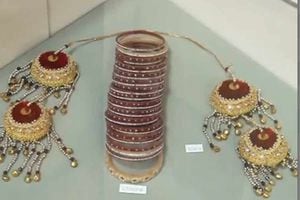Indian jewellery lights up Walsall Museum
The beautiful and ornate jewellery worn by Indian brides is lighting up Walsall Museum in a special display.

Examples of the unique ornaments worn only by brides are on show, including the choora, a set of 21 bangles presented to the bride by her mother's brother and worn for a compulsory 40 days and the hathpool, a traditional Rajasthan piece of jewellery worn on the back of each hand.
Also on show are further pieces of traditional Indian jewellery, such as the haar (necklace), churiya (bangles), and payal or pajeb (anklets).
India has been producing beautiful jewellery, gold and gemstones for many centuries. Jewellery in India is not used solely for adornment but also has many religious meanings, as well as being seen as being important in protecting health and fortune. Many of the traditional designs and styles used in Indian jewellery date back to the period of the
Mughal emperors from the 16th to the 19th century, when craftsmanship reached a high point of technique and elegance.
This small display on show now until Saturday 24 November within Walsall Museum's Changing Face of Walsall gallery on the first floor of the Central Library and Museum building.
Entry to the Museum is free of charge. For further information please contact us on 01922 653116 or email museum@walsall.gov.uk.





